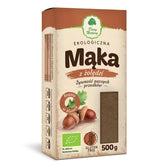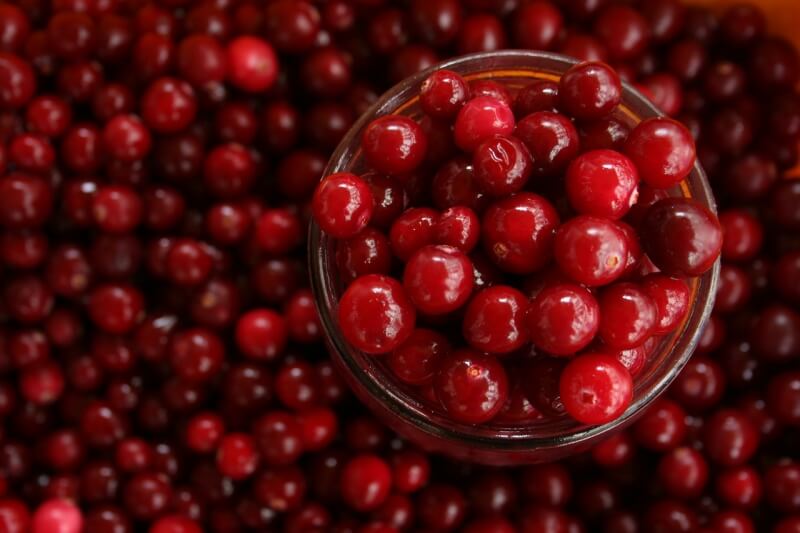Cranberries – only health. Are you sure?
CONTENTS
Cranberries have been a staple in Polish cuisine for hundreds of years. They are most popular in the form of jam, served with meat, and dried fruit, eaten as a snack. Their properties are highly beneficial to our health, but they also pose some risks. What are they? Read the article below.
Cranberry properties
A well-known property of cranberries is their beneficial effect on the urinary system. They can be used prophylactically to prevent problems in this area. It is recommended, for example, during pregnancy, when the risk of such problems is high, and for women in general, as they are more likely to suffer from recurring urinary tract infections. It also has healing effects on bacterial infections of the urinary tract or cystitis. Many medicinal preparations are based on cranberry extracts.
However, these aren't the only benefits of cranberries . It can also be used to prevent cardiovascular diseases, one of the leading causes of death today. It regulates blood cholesterol levels, lowers blood pressure, and reduces homocysteine levels. An excess of the latter not only contributes to an increased risk of stroke, arteriosclerosis, or heart attack, but also to the development of cancer, diabetes, and neurological diseases such as Alzheimer's disease.
Cranberries are also recommended for metabolic disorders. They regulate blood sugar levels and are therefore recommended for people with diabetes, insulin resistance, and other carbohydrate metabolism problems. They are also low in calories and can therefore be included in the diet of people trying to lose weight. However, not every form of cranberries is suitable for them. What should they choose? You can read more below.
Cranberries are rich in antioxidants. They are a good source of vitamin C and polyphenols, which slow the aging process. However, it's important to remember that cranberries should not be subjected to any thermal processing to fully benefit from these health-promoting effects. They are also a good source of B vitamins and fiber. These compounds are found in the greatest amounts in fresh cranberries and to a lesser extent in processed cranberries.
Cranberry – how to use it?
Cranberries are usually served on Polish tables in the form of jam with a slightly sour and tangy flavor, which is usually served with savory dishes, especially meat. Dried fruits are also popular. We can eat them on their own – as a snack – or add them to, for example, oatmeal or yogurt.
Our mothers and grandmothers would surely love to share the recipe for fresh cranberry jelly with their little ones. Until recently, it was a popular way to supplement a child's diet. Cranberry jelly was also commonly prepared in the past. You can find cranberry juices or teas in health food stores.
In fact, all of these recipes can be prepared at home. Simply buy fresh cranberries, which can be found at bazaars and some greengrocers in the fall (usually between September and November). Homemade cranberry jams are easy to make and certainly much healthier than store-bought counterparts.
Cranberry – which one to choose?
There are many ways we can consume cranberries. I don't think anyone needs convincing that their nutritional value is worth it. However, you should ask yourself whether every cranberry available on the market is beneficial to us.
Fresh cranberries themselves are very sour. Store-bought jams or dried cranberries tend to be sweeter. The explanation is simple: Manufacturers add a lot of sugar to their products. In popular packages of dried cranberries available in supermarkets, the contents are usually half sugar. Without this addition, cranberries would be rather inedible to our palates. But does it have to be so much? Certainly not. Producers like this situation because sugar is much cheaper than fruit. By processing cranberries at home, we can influence the amount of sweetener added. We can also use a healthier sugar equivalent, e.g. xylitol or erythritol.
This is especially important for people with carbohydrate metabolism problems, as adding sugar increases the product's glycemic index. Despite their health benefits, cranberries may not be recommended for them. Dieters should also be careful, as dried cranberries, for example, still contain a lot of calories even with less added sugar.
If you're unsure about cranberries at home and still don't want to eat "cranberry sugar," always read the labels. Dried cranberries or cranberry juices with no added sugar, less sugar, or sweetened with healthy alternatives can be found in health food stores or ordered online.
THE PUBLISHER'S CHOICE
Dried plums 1 kg BIOGO
- €7,01
- €7,01
- Unit price
- / per
Dried White Mulberries 500 g ORGANIC
- €5,84
- €5,84
- Unit price
- / per
Almonds 1 kg BIOGO
- €11,69
- €11,69
- Unit price
- / per
Cranberries sweetened with apple juice organic 1 kg BIOGO
- €16,37
- €16,37
- Unit price
- / per
Dried dates 1 kg BIOGO
- €4,21
- €4,21
- Unit price
- / per
Unpeeled buckwheat groats 1 kg BIOGO
- €2,81
- €2,81
- Unit price
- / per
Walnuts 800 g BIOGO
- €8,65
- €8,65
- Unit price
- / per
Peeled sunflower seeds 1 kg BIOGO
- €3,04
- €3,04
- Unit price
- / per
PULLED ORGANIC SUNFLOWER SEEDS 1 KG BIOGO
- €4,44
- €4,44
- Unit price
- / per












































































































































